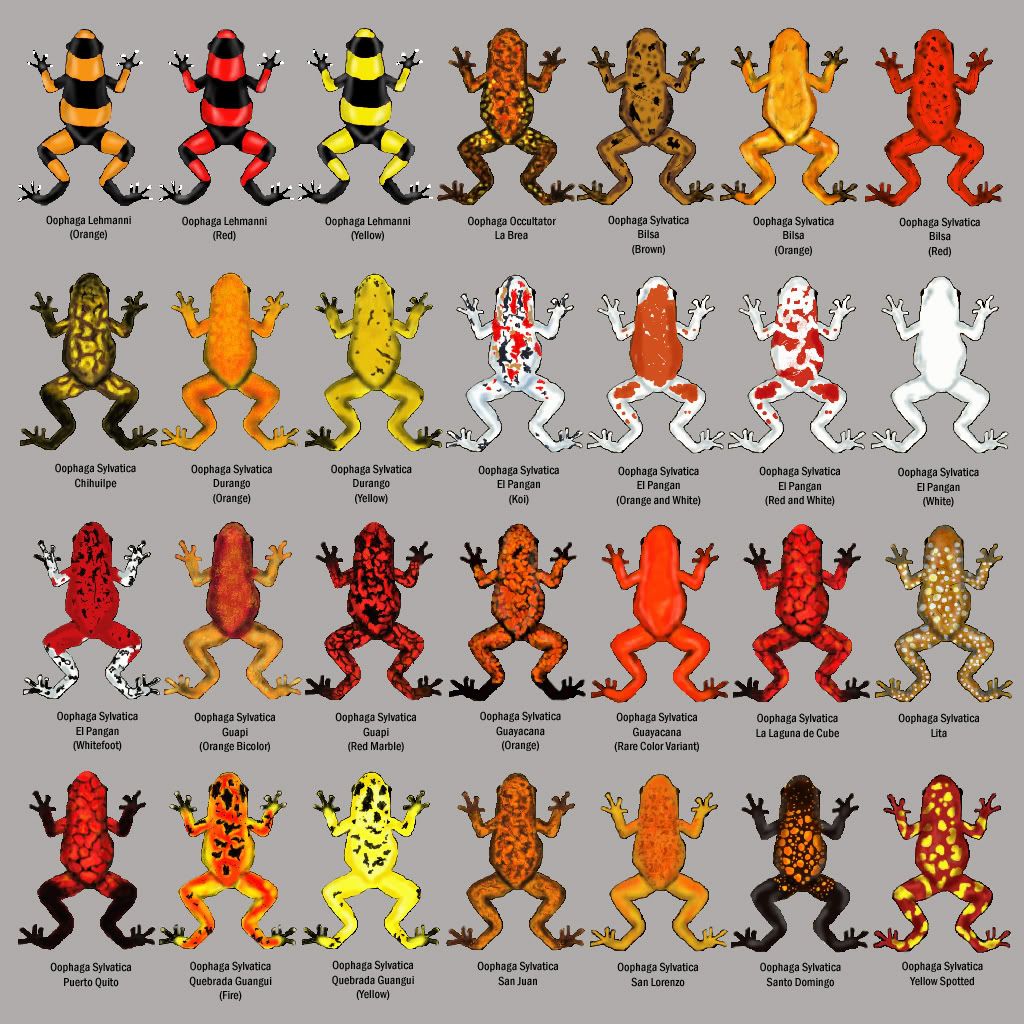 White Bear 84, on 09 December 2012 - 04:19 PM, said:
White Bear 84, on 09 December 2012 - 04:19 PM, said:
Interesting hobby.. ..arent many species really rare/threatened? They are pretty amazing though, bright colours to warn of predators they are not to be messed with.. ..how do you handle them, not a frog expert but know enough to know that many of the frogs you have up there (if not all) would be pretty venomous, i think through the skin??
Many are in the wild, and smuggling especially to Europe and Japan markets is a real problem , but a fair share in the hobby now have been CB in the hobby for decades, and many others are "farm raised", or part of some conservation/indigenous economic program. Most countries limit the number and types allowed for export, often countries shut off the exports for years, and some countries rarely if ever have been open to export. They constantly discover new dart frog species and color morphs, and in dangerous places like Colombia it is difficult for even scientists to get safe access to study/find them...let alone for anyone to arrange legal export.
The hobby takes conservation issues, smuggling and crossbreeding very seriously. They find out you are involved in things like that threaten the integrity of the wild populations, or our breeding stock here in the USA and you'll likely be reported, shunned, hated, and probably some P.O'd frogger will drag you into a dark alley and beat the **** out of you or worse

Dart frogger are some serious people... it isn't nearly as laid back as the snake/gecko/fish hobbies. We generally shun designer color morphs, inbreeding/crossbreeding for specific traits, or keeping multiple species and/or color morphs in the same vivariums.
The majority of frogs are probably CB (Captive Bred)...In captivity they generally loose most if not all their toxic nature fairly quickly because they don't have access to the food types they use to sequester the poisons/raw materials to make the poisons from in the wild. Though there have been instances where WC (wild caught) frogs maintained their toxicity for a few years.
There are only a hand full of dart frogs that are toxic enough to pose a serious threat to larger animals and/or humans. Generally it is the most toxic ones like [color=#000000]
Phyllobates terribilis that manage to retain any significant toxicity, which is fairly common in the hobby and carries the toxin [/color][color=#000000]
Batrachotoxin, which I've have seen written as the #2 most toxic substance in nature (Probably top 10 at least. (2 fine grains like salt worth is enough to kill 150lb person) ).[/color][color=#000000]
but most if not all have been CB for many years. So pretty unlikely you could get a hold of one that was toxic. (Yes btw the toxins are in the skin, and stressing a frog can make them produce more)[/color]
Phyllobates terribilis:
]

Generally most reptiles and amphibians should not be handled much...even the ones pet dealers claim you can handle because it stresses them out, and stress kills/shortens lifespans. For darts Most people use bare hands, gloves, a cup, tube or something to transfer them to one tank or another just to minimize stress and their exposure to contaminates. You can hold them bare handed, but shouldn't for their health not yours. With the wild frogs about the worst that would happen to you if you held one is a burning/tingling or numbing sensation on your hands, especially if you had cuts or abrasions. You wouldn't want to put one down your pants, or touch your face or eyes just after handling probably

And lastly a shameless plug. One of my vivariums with special guest appearance by Echo the Fennec Fox...

Vivariums like this are not that difficult to make, and are actually much much easier to care for then high end fresh or saltwater aquariums. For more info/pics and to join up and learn how to make your own viv/get started in the hobby visit...
http://www.dendroboard.com/forum/
Edited by Onyx Rain, 10 December 2012 - 02:38 AM.



















 White Bear 84, on 09 December 2012 - 04:19 PM, said:
White Bear 84, on 09 December 2012 - 04:19 PM, said: White Bear 84, on 09 December 2012 - 04:19 PM, said:
White Bear 84, on 09 December 2012 - 04:19 PM, said:

 Onyx Rain, on 10 December 2012 - 02:34 AM, said:
Onyx Rain, on 10 December 2012 - 02:34 AM, said:
 Ozric, on 10 December 2012 - 09:11 AM, said:
Ozric, on 10 December 2012 - 09:11 AM, said: Onyx Rain, on 10 December 2012 - 11:19 AM, said:
Onyx Rain, on 10 December 2012 - 11:19 AM, said: Ozric, on 10 December 2012 - 01:07 PM, said:
Ozric, on 10 December 2012 - 01:07 PM, said: